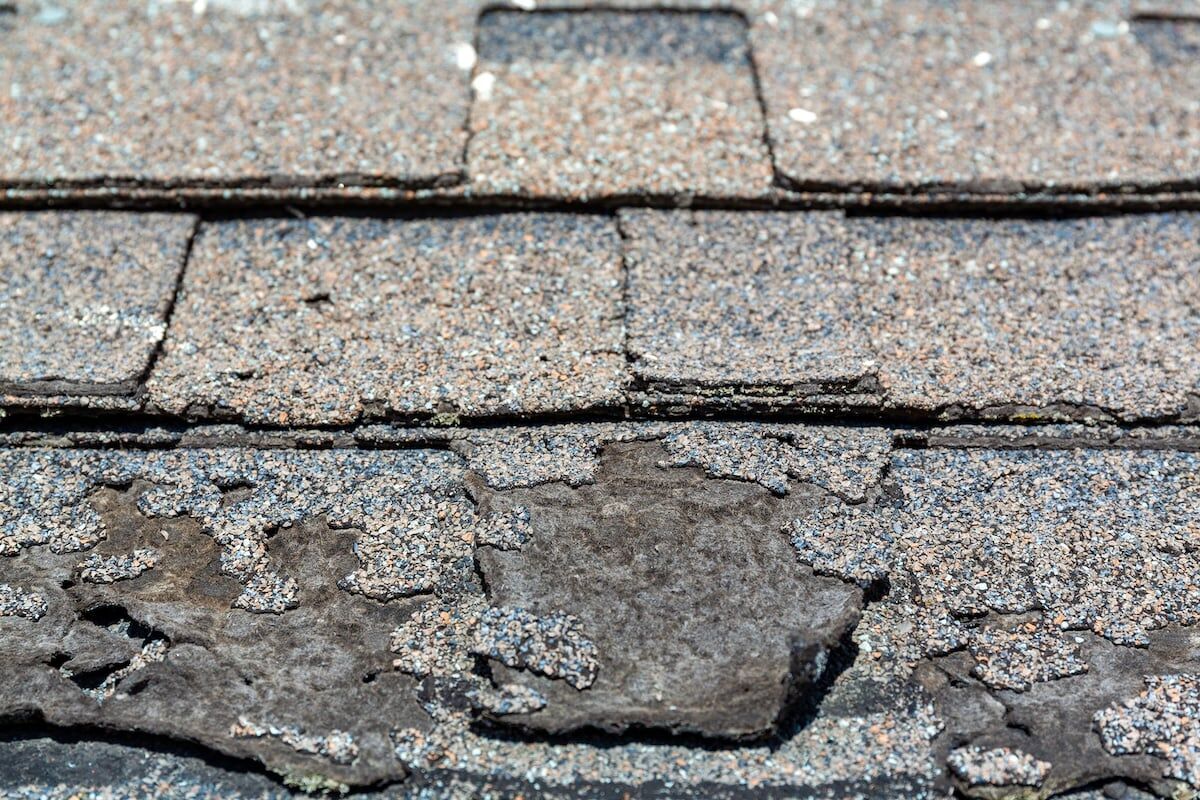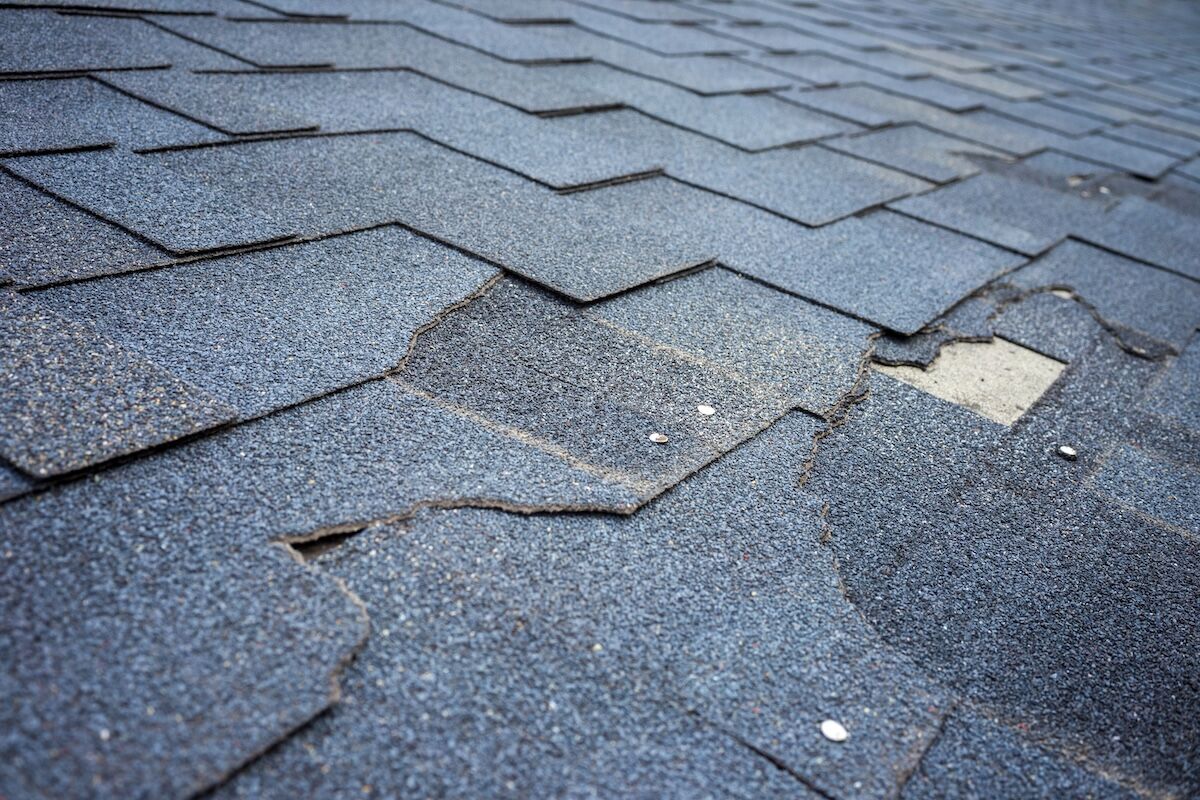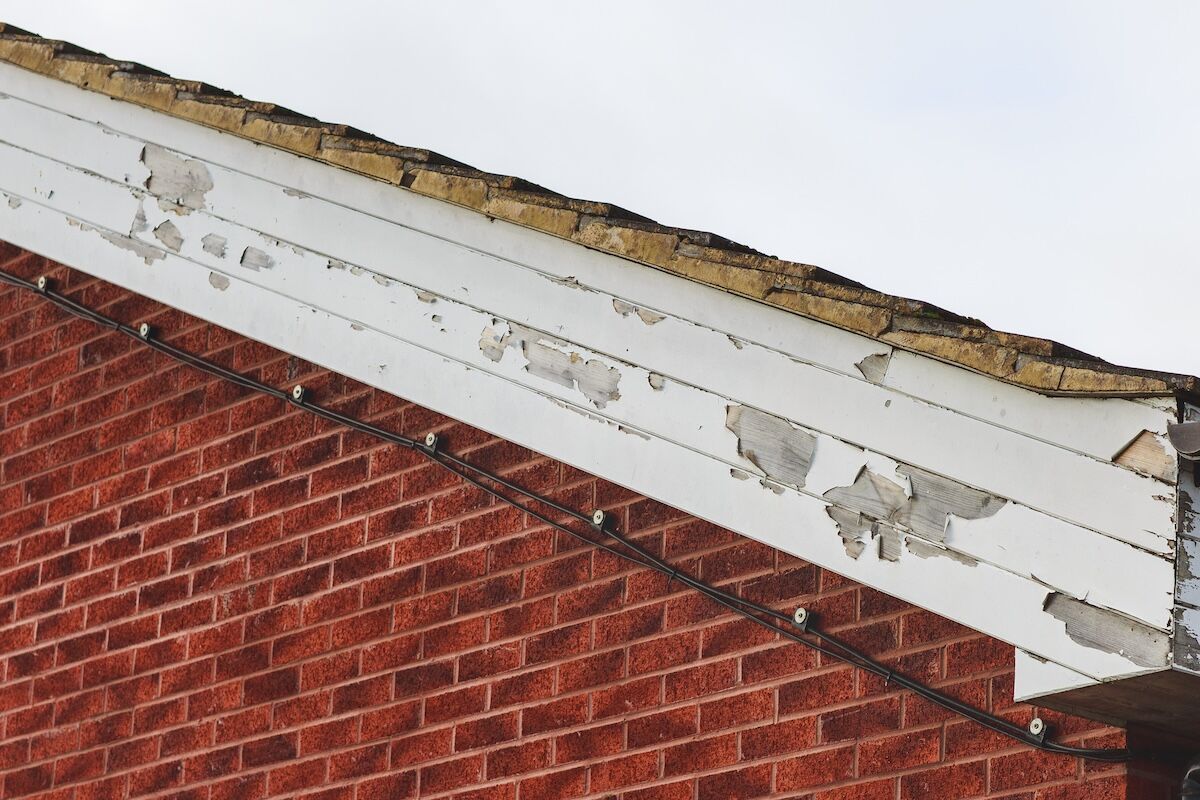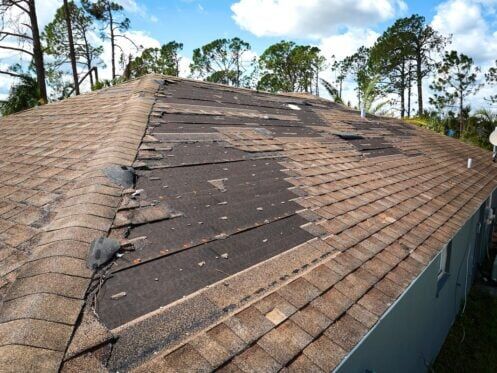Learning to recognize the early signs of roof damage is essential for protecting your home. Whether caused by age, storms, or poor installation, roof damage can escalate quickly—leading to leaks, mold, and structural problems. Spotting issues early gives you time to address them before they become costly repairs or full replacements.
- Leak prevention: Early detection stops water from reaching your attic or walls.
- Home safety: Damaged roofs can weaken structural support or introduce mold.
- Lower costs: Small fixes are more affordable than emergency roof replacements.
This guide walks you through the most common signs of roof damage so you can keep your home safe, dry, and protected all year round.
❗️ Why Detecting Roof Damage Early Matters
Many homeowners wait until water is dripping from the ceiling to check their roof—but by that point, you’re already dealing with interior damage. A small issue like a cracked shingle or loose flashing can turn into a major problem if ignored.

Delayed Repairs Can Lead To:
- Costly restoration: Water intrusion damages insulation, drywall, and wood framing.
- Mold growth: Moisture from roof leaks can lead to mold, which spreads quickly and threatens health.
- Structural damage: Sagging roofs or soft decking can compromise your home’s integrity.
- Insurance complications: Waiting too long may reduce your chance of a successful claim.
Catching issues early protects both your home and your wallet.
⚠️ 7 Signs of Roof Damage Homeowners Should Never Ignore
Here are the key red flags to watch for when inspecting your roof:
1. Missing or Damaged Shingles
- What to look for: Shingles that are curled, cracked, torn, or completely missing.
- Why it matters: Exposed underlayment and decking are vulnerable to water infiltration.
- What causes it: Storms, UV exposure, or aging materials.
2. Leaks or Water Stains Indoors
- What to look for: Water spots on ceilings or walls, peeling paint, or moisture in the attic.
- Why it matters: These are often the first signs of a roof leak—act quickly to avoid further damage.
- What causes it: Damaged flashing, cracked seals, or broken shingles.
3. Sagging Roof Lines
- What to look for: A roof that dips or sags in the middle or along ridgelines.
- Why it matters: This may signal serious structural issues or rot in the decking or trusses.
- What causes it: Water damage, age, or improper installation.
4. Granules in Gutters
- What to look for: Dark, sand-like material collecting in gutters or at downspout exits.
- Why it matters: Granule loss means your asphalt shingles are wearing out and may no longer protect your roof.
- What causes it: UV rays, hail, or wind wear down the protective surface.
5. Damaged Flashing
- What to look for: Bent, loose, rusted, or missing flashing around chimneys, vents, or valleys.
- Why it matters: Flashing seals vulnerable seams and keeps water out—when it fails, leaks follow.
- What causes it: Weather, improper sealing, or installation errors.
6. Moss or Algae Growth
- What to look for: Green or black streaks, clumps of moss, or dark stains on shingles.
- Why it matters: Moss holds moisture and can lift shingles, leading to decay beneath.
- What causes it: Moist, shaded areas and poor roof ventilation.
7. Rising Energy Bills
- What to look for: A spike in heating or cooling costs with no other explanation.
- Why it matters: Damaged roofs can allow air leaks or reduce attic insulation performance.
- What causes it: Missing shingles, poor ventilation, or insufficient insulation.
🔍 How to Check for Roof Damage from the Ground
You don’t have to climb on your roof to catch most problems. Many signs of roof damage can be seen from the yard or with binoculars.

What You Can Safely Inspect:
- Shingle condition: Look for color inconsistencies or misaligned shingles.
- Flashing around edges: Check for exposed or rusted metal.
- Gutter contents: Inspect what’s coming out of your downspouts after a storm.
- Soffit and fascia: Watch for cracks, warping, or signs of pests.
- Attic signs: Use a flashlight to inspect for light leaks, damp spots, or musty smells.
If you’re unsure or spot anything concerning, contact a roofing professional for a full inspection.
📋 When to Schedule a Professional Roof Inspection
You should schedule a full inspection at least once a year—or immediately after a major storm. A professional roofer can spot issues that aren’t visible from the ground or to an untrained eye.
Ideal Inspection Times
- After hail or high wind storms
- In spring and fall as part of seasonal prep
- Before listing your home for sale
- If your roof is 10+ years old and hasn’t been inspected recently
🤔 What Happens During a Roof Inspection?
Here’s what to expect when a roofing contractor inspects your home:
- Shingle condition check: Look for lifting, warping, or breakage.
- Flashing and sealant review: Identify cracked seals or loose flashing.
- Structural integrity check: Examine decking, trusses, and support for weakness.
- Attic inspection: Check insulation, ventilation, and signs of leaks or pests.
- Detailed report: You’ll receive documentation, photos, and repair recommendations if needed.
👍 Preventing Roof Damage Before It Starts
Taking proactive steps can extend your roof’s life and reduce the risk of unexpected problems.

Smart Maintenance Tips
- Clean gutters regularly: Prevents water backup that can rot roof edges.
- Trim overhanging branches: Reduces shade and physical impact from storms.
- Install proper ventilation: Keeps moisture and heat from building up in your attic.
- Fix minor issues fast: Small repairs now prevent major costs later.
- Get annual inspections: An expert eye can catch things you might miss.
✅ Know the Signs & Act Early
Recognizing the early signs of roof damage is the key to avoiding expensive repairs and keeping your home safe and dry. From missing shingles to subtle moss patches, each warning sign deserves attention before it escalates.
At Indy Roof & Restoration, we help homeowners stay ahead of roofing issues with fast, reliable inspections and honest repair advice. Whether you’ve noticed something unusual or just want peace of mind, our team is here to help.
See something suspicious on your roof? Schedule an inspection with Indy Roof & Restoration today and protect your home before small problems become big ones.

